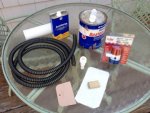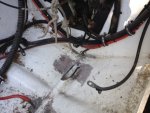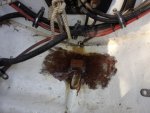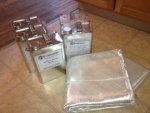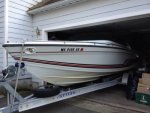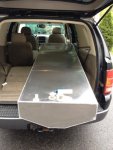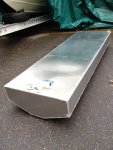Re: 1991 Formula 242 Stringer & Bulkhead Repairs
Re: 1991 Formula 242 Stringer & Bulkhead Repairs
Weekend Update - April 29th 2012 - More Preparation work:
I continued to prep the boat for fiberglass work, which will probably start next weekend. Here are a few pics.
I removed the fuel line and cut the conduit to gain better access to the starboard side. Since I am having the fuel tank made a few inches shorter (i.e. fittings will be a bit further forward), I will probably have to relocate where the conduit exits the stringer anyway. Plus the fuel and vent lines will most likely be a few inches longer.
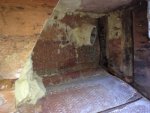
I also plan to make a flat base along the keel inside the fuel tank compartment so that water can easily drain aft and thru the bulkhead into the bilge. The current design allows water to get trapped at the ribs in the hull. It had saturated the foam underneath the old tank. Here is a pic of the keel area roughed up. I won't make the flat base until after I have the bulkhead in.

There was some dis-coloration which looked like mold along the main stringers. I figured that it could be quickly cleaned up with a hit from the wire wheel. To my surprise . . .the 'mold' was underneath the resin !!! So, I had to cut into the resin to remove the dis-coloration. My plan is to add a layer of glass to the main stringers so everything will be sealed back up again.
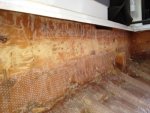
The rot in one of the rear outboard stringers went a bit further aft than I had originally thought. So, I cut the side open to clean things out. I will have to get creative to marry a new stinger portion into the remaining wood. The good thing is that there are 3 stringers in this location that are about 6 inches apart.
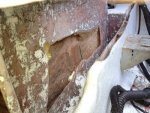
The engine mount stringers are going to be filled. Formula Boats (the manufacturer), has what is called a "Suspended Stringer System" where the entire stringer/bulkhead assembly is raised off the hull about 3/4" prior to glassing to the hull. In order to emulate the 3/4" spacing with a filled stringer, I injected some urethane foam at the bottom of the stringer cavity and then tamped it down with some thin foam strips.
Here is a peak at the foam down at the bottom of the stringer cavity. This should do the trick of having the poured stringer act like a "suspended" stringer.

I also put a similar foam buffer where the bulkhead and the main stringer portions will go. This is in case I slobber too much resin during the glassing of these components.

So, things are continuing to dry out in anticipation of fiberglass work next weekend. My new fuel tank should also be ready then, So, I may spend 1/2 a day going to pick it up.
TTFN -






















